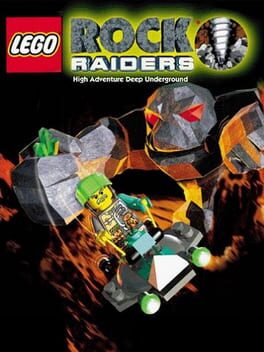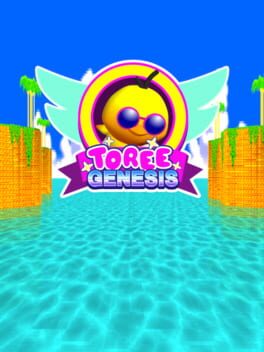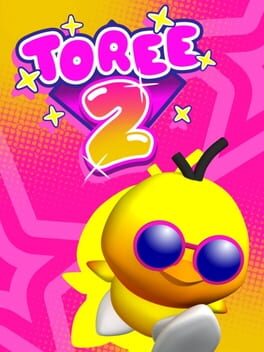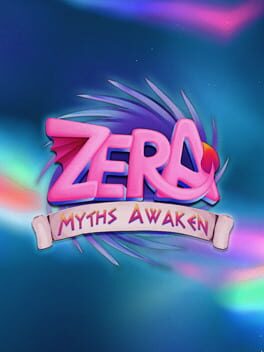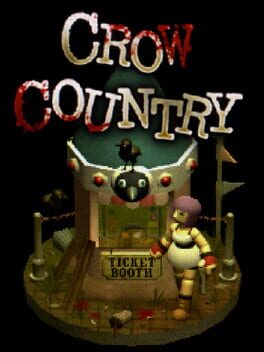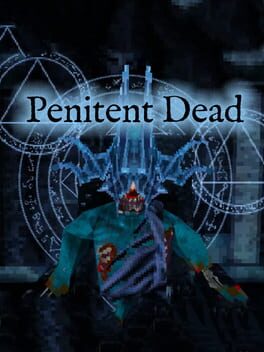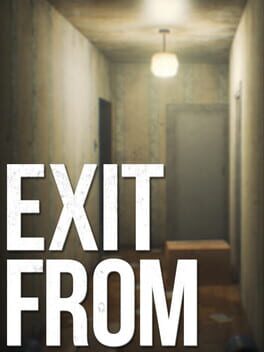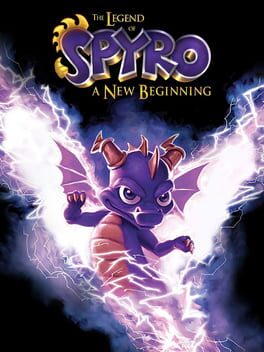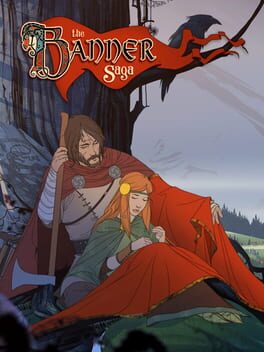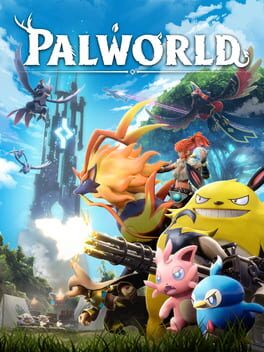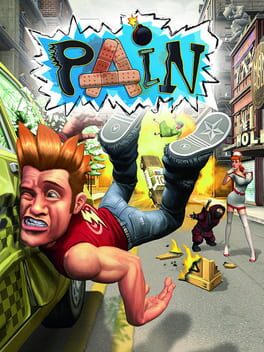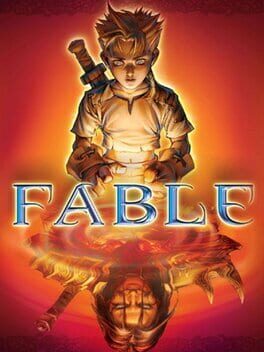ANerdList
1999
2022
This review contains spoilers
This game is honestly pretty brilliant from a storytelling perspective. The visual metaphors and the narrative structure capture the experience of suffering in an abusive household and fearing one's father quite well. And if this were a short film, I would be praising it.
Unfortunately, Traffic didn't work for me as a gaming experience. It is often aimless, structurally schizophrenic, and boring for most of its play time. I don't think I've ever related to a game protagonist more than I did in this game when the playable character said, "this isn't fun anymore."
In short: I understood Traffic's message far, far earlier than it arrived at its own point. And by then, the monotonous walking back-and-forth I had done across that L-shaped house for the past hour had long worn out its welcome. Its interesting philosophical statements aside, the game did not engage me as a player.
Walking simulators can absolutely work. I love a fair few of them. This isn't a case of a veteran gamer yelling at the kids to get off his lawn. I have no delusions about the "good old days," I haven't fallen down any right-wing rabbit holes online, and I don't hate Bloober Team for simply existing. BUT, the best walking simulators out there still make the experience of playing them varied enough to keep me on my toes and give me a sense of momentum. On that front, Traffic unfortunately felt stagnant very early on.
I give Bath Simulator 1/5.
Unfortunately, Traffic didn't work for me as a gaming experience. It is often aimless, structurally schizophrenic, and boring for most of its play time. I don't think I've ever related to a game protagonist more than I did in this game when the playable character said, "this isn't fun anymore."
In short: I understood Traffic's message far, far earlier than it arrived at its own point. And by then, the monotonous walking back-and-forth I had done across that L-shaped house for the past hour had long worn out its welcome. Its interesting philosophical statements aside, the game did not engage me as a player.
Walking simulators can absolutely work. I love a fair few of them. This isn't a case of a veteran gamer yelling at the kids to get off his lawn. I have no delusions about the "good old days," I haven't fallen down any right-wing rabbit holes online, and I don't hate Bloober Team for simply existing. BUT, the best walking simulators out there still make the experience of playing them varied enough to keep me on my toes and give me a sense of momentum. On that front, Traffic unfortunately felt stagnant very early on.
I give Bath Simulator 1/5.
2022
2021
It's a good proof-of-concept for a loving Spyro homage. Pretty graphics. Good level design. Memorable music.
The issues come with the controls. And unfortunately, that's the main aspect that needs to be as close to perfect as possible for a platformer. A game like this will make or break based on how tight the control of the character is. As of this writing, the early access version of Zera is an absolute mess in this regard. The camera sensitivity is far too touchy, meaning that it is difficult to properly aim my direction without unintentionally overshooting my trajectory and veering off too far to the left or the right. Moving Zera around the game world also feels very "slippery." Timing and aiming precise jumps, as well as staying on course over thin bridges with little margin for error while charging, old school Spyro-style, is far more unwieldy than it should be in a game that touts itself as a spiritual successor to that game.
A particularly frustrating section of the game for me came in the very first proper stage. This game's equivalent of the egg thief character, sack of goods in hand, spotted me and started running in the expected circular pattern I had seen dozens of times before. I've been playing Spyro for decades. I am no novice to these chase sequences. And yet, I found that the imprecise, slippery movement of Zera meant that I was never able to maintain a consistent path or momentum long enough to ever catch up with the little bastard. Each time I would find my rhythm and speed, I would lose control of Zera and go flying off the ledge and into the depths below (yes, the game's very first chase sequence, which should arguably serve as a tutorial for the mechanics of them, takes place on a very thin, circular section of land over a pool of acid).
All of the pieces are there. The game has potential. But as I was playing Zera, in its current janky state, all I could think of was how much it was making me want to simply boot up Spyro and play it instead.
The issues come with the controls. And unfortunately, that's the main aspect that needs to be as close to perfect as possible for a platformer. A game like this will make or break based on how tight the control of the character is. As of this writing, the early access version of Zera is an absolute mess in this regard. The camera sensitivity is far too touchy, meaning that it is difficult to properly aim my direction without unintentionally overshooting my trajectory and veering off too far to the left or the right. Moving Zera around the game world also feels very "slippery." Timing and aiming precise jumps, as well as staying on course over thin bridges with little margin for error while charging, old school Spyro-style, is far more unwieldy than it should be in a game that touts itself as a spiritual successor to that game.
A particularly frustrating section of the game for me came in the very first proper stage. This game's equivalent of the egg thief character, sack of goods in hand, spotted me and started running in the expected circular pattern I had seen dozens of times before. I've been playing Spyro for decades. I am no novice to these chase sequences. And yet, I found that the imprecise, slippery movement of Zera meant that I was never able to maintain a consistent path or momentum long enough to ever catch up with the little bastard. Each time I would find my rhythm and speed, I would lose control of Zera and go flying off the ledge and into the depths below (yes, the game's very first chase sequence, which should arguably serve as a tutorial for the mechanics of them, takes place on a very thin, circular section of land over a pool of acid).
All of the pieces are there. The game has potential. But as I was playing Zera, in its current janky state, all I could think of was how much it was making me want to simply boot up Spyro and play it instead.
2024
When the indie game market is currently overly saturated with samey pixel art Metroidvanias, it's nice to see a different form of nostalgia art tapped into once in awhile. So is the case with Crow Country, a survival horror game done lovingly in the style of the PS1 classics Resident Evil and Silent Hill. But this game offers its own charm to the mix, featuring an art style (and a soundtrack) that holds much more in common with Final Fantasy VII than it does those formally mentioned titles.
This means that when you embark on the adventure that awaits you in Crow Country, you feel a bit cozier and calmer than you would typically expect to feel in a horror title of this stripe. The music is soothing beautiful, the character models are done in a cute, chibi style, and the monster encounters are sparse enough that they don't feel overwhelming.
The game's graphics and sound provide an amazing atmosphere, but the puzzles are also a refreshing aspect that keep the experience of playing through Crow Country engaging. Similarly to the look and sound of the game, the puzzles also provide a "sweet spot" of just the right mixture of challenge and ingratiation. Yes, the puzzles aren't obvious at the outset, but none of their solutions ever came across as moon logic. Once you get the hang of how the solutions are found, all of the puzzles in the game end up feeling very intuitive and logically sound. At no point along my adventure did I ever feel like the game was trying to outright trick me or be unfair. The puzzles aren't immediately understandable, but pretty quick, with enough exploration of the game world, they become very simple and straightforward.
And then, there is the story. And I will not spoil it here. But what I will say is that it is exceptionally executed. Its simple brilliance honestly caught me off-guard. And it makes the whole experience much more meaningful than a simple nostalgic romp. The narrative helps give Crow County its own identity despite its obvious influences.
The game can also be played as a purely casual exploration game. Which is also a pleasant experience. But I recommend simply playing it in horror mode. Even with the scares, it isn't terribly oppressive.
A thrilling example of how higher effort nostalgia can really give birth to something special. I'm floored.
This means that when you embark on the adventure that awaits you in Crow Country, you feel a bit cozier and calmer than you would typically expect to feel in a horror title of this stripe. The music is soothing beautiful, the character models are done in a cute, chibi style, and the monster encounters are sparse enough that they don't feel overwhelming.
The game's graphics and sound provide an amazing atmosphere, but the puzzles are also a refreshing aspect that keep the experience of playing through Crow Country engaging. Similarly to the look and sound of the game, the puzzles also provide a "sweet spot" of just the right mixture of challenge and ingratiation. Yes, the puzzles aren't obvious at the outset, but none of their solutions ever came across as moon logic. Once you get the hang of how the solutions are found, all of the puzzles in the game end up feeling very intuitive and logically sound. At no point along my adventure did I ever feel like the game was trying to outright trick me or be unfair. The puzzles aren't immediately understandable, but pretty quick, with enough exploration of the game world, they become very simple and straightforward.
And then, there is the story. And I will not spoil it here. But what I will say is that it is exceptionally executed. Its simple brilliance honestly caught me off-guard. And it makes the whole experience much more meaningful than a simple nostalgic romp. The narrative helps give Crow County its own identity despite its obvious influences.
The game can also be played as a purely casual exploration game. Which is also a pleasant experience. But I recommend simply playing it in horror mode. Even with the scares, it isn't terribly oppressive.
A thrilling example of how higher effort nostalgia can really give birth to something special. I'm floored.
2019
2021
It's the same map layout/assets from "From the Darkness," but while that game was a successfully scary and atmospheric horror puzzler, this game just feels repetitive and flat. The only enemy in the game is this shirtless fuck who chases you around cursing in Russian. He pokes you with a stick, then the game starts completely over.
Every item location is randomly generated, so there is no memorizing the puzzles. If you don't finish the game in one go, you'll have to start completely over next time, with everything randomly placed again. It makes the game monotonous, because the Russian guy can sometimes just randomly appear on the same floor as you without making any sound, so he can kill you without you even realizing he's there.
If the game were just an eerie walking simulator where the fear of a potential entity were the hook, I think the formula would work. But the bad enemy AI that can sometimes unfairly kill you and undo all your progress does not combine well with the randomized puzzles element.
The atmosphere is nice and spooky. The graphics aren't bad. Everything else kind of falls short.
Every item location is randomly generated, so there is no memorizing the puzzles. If you don't finish the game in one go, you'll have to start completely over next time, with everything randomly placed again. It makes the game monotonous, because the Russian guy can sometimes just randomly appear on the same floor as you without making any sound, so he can kill you without you even realizing he's there.
If the game were just an eerie walking simulator where the fear of a potential entity were the hook, I think the formula would work. But the bad enemy AI that can sometimes unfairly kill you and undo all your progress does not combine well with the randomized puzzles element.
The atmosphere is nice and spooky. The graphics aren't bad. Everything else kind of falls short.
It's particularly heinous to take such a beloved character from such a beloved trilogy of games and then completely throw out everything that made them beloved in the first place in the service of making a "better" or "modern" gaming experience.
We didn't need Spyro to become an epic fantasy with booming orchestral music, dark edge, and blood and gore. But hey, if the updates game mechanics at least added something significantly better to the formula, I could have forgiven the misplaced tone shift. But even the new mechanics and move set feel like tacked-on elements ripped straight out of the spectacle fighters that were big at the time such as Devil May Cry, Ninja Gaiden, and God of War. It's incredibly bizarre to add such elements to a 3D platformer. And the character just wasn't designed for that sort of gameplay. He's a dinky little dragon who is built like a cat. He's not a fully able-bodied humanoid. So, you're still stuck doing things like throwing projectiles at a distance while being bombarded with arena-based enemy ambushes that just makes the combat needlessly infuriating.
And yes, Spyro's new design looks god-awful. But that's the least of this reboot series's problems. If the gameplay felt like a natural evolution of the foundation built by the original games, I wouldn't care if the main character were an ugly fucker. But nothing else redeemable is found elsewhere, so the bad character design feels like a bigger offense as a result.
Anyway. I don't like this game. And I don't like the revival era of the franchise it belongs to. None of these "Legend of Spyro" entries are fun for me. In fact, they made me sad and depressed to play.
We didn't need Spyro to become an epic fantasy with booming orchestral music, dark edge, and blood and gore. But hey, if the updates game mechanics at least added something significantly better to the formula, I could have forgiven the misplaced tone shift. But even the new mechanics and move set feel like tacked-on elements ripped straight out of the spectacle fighters that were big at the time such as Devil May Cry, Ninja Gaiden, and God of War. It's incredibly bizarre to add such elements to a 3D platformer. And the character just wasn't designed for that sort of gameplay. He's a dinky little dragon who is built like a cat. He's not a fully able-bodied humanoid. So, you're still stuck doing things like throwing projectiles at a distance while being bombarded with arena-based enemy ambushes that just makes the combat needlessly infuriating.
And yes, Spyro's new design looks god-awful. But that's the least of this reboot series's problems. If the gameplay felt like a natural evolution of the foundation built by the original games, I wouldn't care if the main character were an ugly fucker. But nothing else redeemable is found elsewhere, so the bad character design feels like a bigger offense as a result.
Anyway. I don't like this game. And I don't like the revival era of the franchise it belongs to. None of these "Legend of Spyro" entries are fun for me. In fact, they made me sad and depressed to play.
2014
It's rare that a game so simultaneously artful and fun to play comes along and ticks every conceivable box for me, but The Banner Saga has done it. While I had heard for years about this series, I wasn't certain if it would be up my alley, primarily because tactical RPGs are not my bread and butter. I often feel awkward and lost at sea when I jump into such a game, but The Banner Saga has helped me make the jump into its world quite easily.
The two main draws of the game are its gorgeous art style (inspired greatly by the stylized impressionism of Eyvind Earle) and its brilliant writing. The story is stock enough in its general set-up, but the snappy dialogue of the main characters, as well as the how the story changes based on player choices, elevate the writing overall to something impeccably replayable and entertaining.
The game is also not too relentless in its combat sections. Yes, it's typical strategy, grid-based RPG goodness, but it doesn't feel terribly punishing to the less-initiated. While there is perma-death in the game, it never occurs from mistakes made in battle. Instead, if a fighter falls during combat, that counts as merely an "injury" that one can quickly recover from by resting at camp. The perma-death mechanic actually stems solely from choices made through dialogue and actions outside of combat. And in those scenarios, it feels much more fair when a player is punished in this way for making a dumb choice rather than losing a fight despite doing one's best.
One of my favorite RPGs of all time, now. Gorgeous. Memorable. Fun as hell. Unique enough to have its own distinct identity. Required playing.
The two main draws of the game are its gorgeous art style (inspired greatly by the stylized impressionism of Eyvind Earle) and its brilliant writing. The story is stock enough in its general set-up, but the snappy dialogue of the main characters, as well as the how the story changes based on player choices, elevate the writing overall to something impeccably replayable and entertaining.
The game is also not too relentless in its combat sections. Yes, it's typical strategy, grid-based RPG goodness, but it doesn't feel terribly punishing to the less-initiated. While there is perma-death in the game, it never occurs from mistakes made in battle. Instead, if a fighter falls during combat, that counts as merely an "injury" that one can quickly recover from by resting at camp. The perma-death mechanic actually stems solely from choices made through dialogue and actions outside of combat. And in those scenarios, it feels much more fair when a player is punished in this way for making a dumb choice rather than losing a fight despite doing one's best.
One of my favorite RPGs of all time, now. Gorgeous. Memorable. Fun as hell. Unique enough to have its own distinct identity. Required playing.
2001
2024
UPDATE: The comments section under this review is now closed. I don't feel like constantly pushing back against uncharitable characterizations of me or my position every few minutes of my day. I have more important things to do with my time. A lot of you really don't like that I consider the worst reviews of this game on here to be petty and vapid. I get it. But name-calling and misrepresentation is not the way to win me over to the other side of this conversation.
In a good faith effort to address some of the criticisms of my review that actually made sense to me, I have revised some passages to be clearer in their intent. Beyond that, I can't do anything else. I can't lie and claim to also think this game is garbage when that isn't how I feel. If you want a Palworld hate circlejerk, you can find plenty of those under the scads of one- and half-star reviews bombarding this page. Enjoy. But that's not what I want my review page to turn into.
-------
Palworld is not an original game. It also doesn't claim to be. It relishes in its influences, giving intentional nods to the likes of Breath of the Wild, Ark: Survival Evolved, Pokemon, Digimon, Shin Megami Tensei, Minecraft, and others. Through its art style, musical cues, creature designs, and gameplay mechanics, Palworld serves as a joyous love letter to all of these prior games without which it would not exist.
But originality alone is not what makes or breaks a gaming experience for me. Above all else, a game must make me want to keep returning to it, and make the hours pass by in an instant as I have an amazing fun time getting lost in its virtual world. If a game can do that, then it's succeeded at its most important job.
And for me, Palworld is very much a success by those standards.
Equal parts open world adventure game, RPG, fort defense, survival crafting game, monster catcher, and raid-based MMO, Palworld manages, somehow, to balance all of these and function as a game unique enough in its play experience to earn its own place among the gaming canon. I have put over 100 hours into it so far, and the sense of adventure, exploration, wonder, and accomplishment that it gives me is comparable to those same feelings I got from playing Breath of the Wild for the first time. I kid you not.
Is it for everyone? Of course not. But it scratches all of the exact itches I need.
The review bombing this game is getting is really a shame. Because this is one of the very best games of its kind to ever release, and it does not deserve this hate campaign. While there are plenty of actual reasons to dislike this game, the lowest scores for it right now seem to almost always accompany reviews that strike me as somewhat disingenuous and unlettered. Even some reviews go so far as to admit that they haven't even played the game but that they're giving the lowest score possible anyway because want to Fight the Power (TM) and take a stand against what they perceive as a lazy reskin of Pokemon. From this, I can determine that a majority of these most vapid and pointless negative reviews seem to be coming from disgruntled Pokemon fans who feel like their beloved franchise is being plagiarized by or unfairly compared to Palworld.
What I need to clarify, based on the comments on the initial version of this review, is that I am not endorsing the narrative that Palworld is a "Pokemon killer," or that Pokemon as a whole IP sucks, or that Nintendo is awful, or that Palworld is superior to Pokemon in every aspect, or any other claim if this sort. I do, however, believe that Palworld is a more enjoyable gaming experience than any of the mainline Pokemon games in recent memory. That doesn't mean Palworld is innately superior to Pokemon, but it does mean that the programmers and developers behind Palworld have, for whatever reason, managed to make a game that is much more fun to play than current offerings from The Pokemon Community have been. That could change tomorrow, but today, that is a true statement. Whether you think it's derivative as hell, Palworld is, first and foremost, incredibly fun.
The reality is that this game is not ripping off or plagiarizing Pokemon. It is simply too different a game to ever have a claim like that stick. In Pokemon, you catch monsters, bring them out for key battles against other monsters, and traverse fairly linearly from town to town, gym to gym, until you collect them all and beat all the bosses. The end.
In Palworld, you collect monsters, build bases, level up your character, craft outfits, weapons, decorations, armor, more production devices for even more crafting, farm for resources to do the crafting in the first place, give your collected monsters their own weapons and armor, ride them like mounts, employ them as workers around your base, use them in battle, fight alongside them in battle, explore dungeons, traverse an expansive open world, defeat bosses to unlock key upgrade items, complete side missions to expand your base and build even more bases, customize your character's appearance, join other player's games for online co-op, have them join yours as well, form guilds with your online friends and join in raids, defend your own base against other raids, and countless other things that the developers will continue to add through regular updates.
The two games are almost nothing alike. The only similarity being that in both games you collect monsters. But in Palworld, you can do so much more than that. It pulls elements from Minecraft, Harvest Moon, Breath of the Wild, ARK: Survival Evolved, Fortnite, and LEGO, just to name a few. And it isn't coy about these influences. But it also isn't merely a haphazard stitching together of those different game types, either. Palworld manages to take these influences and blend them in such a way that a game with its own distinct identity and play style still emerges from the primordial soup. And the game's huge success is, in my book, completely deserved and earned. People worked hard on this game.
But do not misunderstand me: I was going to give this game five stars anyway. Even before the naysayers started shouting so loudly by the beginning of the new week. Over the weekend I became absolutely obsessed with Palworld's freedom, customizability, and charm, and I was already prepared to declare it my current frontrunner for game of the year. I am not giving it such a high score merely as an attempt to balance out to unfair, review-bombed rating. I am giving it such a high score because I genuinely believe it deserves it. And the fact that the game has sold over 4 million copies in just 3 days shows that I am not alone in enjoying the hell out of it. If that makes me a fool, so be it. I don't stare at my video games on walls in museums. I play them as interactive adventures. Fun factor is king when it comes to how I evaluate games. And Palworld has that in droves.
As for the claims of plagiarism... As of this writing, no proof of this claim has been found. But even if the (very small team of) developers had to use AI generation for some of their assets (as of this writing still unproven, but possible), I do not believe that would lessen the legitimacy of the game's accolades as an incredibly well made gaming experience on the whole. Do some of the creature designs look a bit derivative of Pokemon's art style? Sure, but so does Digimon, Dragon Quest Monsters, Monster Sanctuary, Monster Crown, Monster Hunter, Coromon, Ni no Kuni, Nexomon, Shin Megami Tensei, or any other of the countless creature collection games that exist today and are presented in an anime style. It is inevitable that similarities will occur. And Nintendo and The Pokemon Company do not own the sole rights to the creature collection genre at large. That isn't how this works. You can't patent a style or a genre. It's far too broad a category, and doing so would snuff off creativity and influence, which are key ingredients in art.
I for one am happy that such influences were put to such amazing use in order to create the beautiful art (yes, video games are art, even if you don't personally like them) that is Palworld. Long may it reign.
In a good faith effort to address some of the criticisms of my review that actually made sense to me, I have revised some passages to be clearer in their intent. Beyond that, I can't do anything else. I can't lie and claim to also think this game is garbage when that isn't how I feel. If you want a Palworld hate circlejerk, you can find plenty of those under the scads of one- and half-star reviews bombarding this page. Enjoy. But that's not what I want my review page to turn into.
-------
Palworld is not an original game. It also doesn't claim to be. It relishes in its influences, giving intentional nods to the likes of Breath of the Wild, Ark: Survival Evolved, Pokemon, Digimon, Shin Megami Tensei, Minecraft, and others. Through its art style, musical cues, creature designs, and gameplay mechanics, Palworld serves as a joyous love letter to all of these prior games without which it would not exist.
But originality alone is not what makes or breaks a gaming experience for me. Above all else, a game must make me want to keep returning to it, and make the hours pass by in an instant as I have an amazing fun time getting lost in its virtual world. If a game can do that, then it's succeeded at its most important job.
And for me, Palworld is very much a success by those standards.
Equal parts open world adventure game, RPG, fort defense, survival crafting game, monster catcher, and raid-based MMO, Palworld manages, somehow, to balance all of these and function as a game unique enough in its play experience to earn its own place among the gaming canon. I have put over 100 hours into it so far, and the sense of adventure, exploration, wonder, and accomplishment that it gives me is comparable to those same feelings I got from playing Breath of the Wild for the first time. I kid you not.
Is it for everyone? Of course not. But it scratches all of the exact itches I need.
The review bombing this game is getting is really a shame. Because this is one of the very best games of its kind to ever release, and it does not deserve this hate campaign. While there are plenty of actual reasons to dislike this game, the lowest scores for it right now seem to almost always accompany reviews that strike me as somewhat disingenuous and unlettered. Even some reviews go so far as to admit that they haven't even played the game but that they're giving the lowest score possible anyway because want to Fight the Power (TM) and take a stand against what they perceive as a lazy reskin of Pokemon. From this, I can determine that a majority of these most vapid and pointless negative reviews seem to be coming from disgruntled Pokemon fans who feel like their beloved franchise is being plagiarized by or unfairly compared to Palworld.
What I need to clarify, based on the comments on the initial version of this review, is that I am not endorsing the narrative that Palworld is a "Pokemon killer," or that Pokemon as a whole IP sucks, or that Nintendo is awful, or that Palworld is superior to Pokemon in every aspect, or any other claim if this sort. I do, however, believe that Palworld is a more enjoyable gaming experience than any of the mainline Pokemon games in recent memory. That doesn't mean Palworld is innately superior to Pokemon, but it does mean that the programmers and developers behind Palworld have, for whatever reason, managed to make a game that is much more fun to play than current offerings from The Pokemon Community have been. That could change tomorrow, but today, that is a true statement. Whether you think it's derivative as hell, Palworld is, first and foremost, incredibly fun.
The reality is that this game is not ripping off or plagiarizing Pokemon. It is simply too different a game to ever have a claim like that stick. In Pokemon, you catch monsters, bring them out for key battles against other monsters, and traverse fairly linearly from town to town, gym to gym, until you collect them all and beat all the bosses. The end.
In Palworld, you collect monsters, build bases, level up your character, craft outfits, weapons, decorations, armor, more production devices for even more crafting, farm for resources to do the crafting in the first place, give your collected monsters their own weapons and armor, ride them like mounts, employ them as workers around your base, use them in battle, fight alongside them in battle, explore dungeons, traverse an expansive open world, defeat bosses to unlock key upgrade items, complete side missions to expand your base and build even more bases, customize your character's appearance, join other player's games for online co-op, have them join yours as well, form guilds with your online friends and join in raids, defend your own base against other raids, and countless other things that the developers will continue to add through regular updates.
The two games are almost nothing alike. The only similarity being that in both games you collect monsters. But in Palworld, you can do so much more than that. It pulls elements from Minecraft, Harvest Moon, Breath of the Wild, ARK: Survival Evolved, Fortnite, and LEGO, just to name a few. And it isn't coy about these influences. But it also isn't merely a haphazard stitching together of those different game types, either. Palworld manages to take these influences and blend them in such a way that a game with its own distinct identity and play style still emerges from the primordial soup. And the game's huge success is, in my book, completely deserved and earned. People worked hard on this game.
But do not misunderstand me: I was going to give this game five stars anyway. Even before the naysayers started shouting so loudly by the beginning of the new week. Over the weekend I became absolutely obsessed with Palworld's freedom, customizability, and charm, and I was already prepared to declare it my current frontrunner for game of the year. I am not giving it such a high score merely as an attempt to balance out to unfair, review-bombed rating. I am giving it such a high score because I genuinely believe it deserves it. And the fact that the game has sold over 4 million copies in just 3 days shows that I am not alone in enjoying the hell out of it. If that makes me a fool, so be it. I don't stare at my video games on walls in museums. I play them as interactive adventures. Fun factor is king when it comes to how I evaluate games. And Palworld has that in droves.
As for the claims of plagiarism... As of this writing, no proof of this claim has been found. But even if the (very small team of) developers had to use AI generation for some of their assets (as of this writing still unproven, but possible), I do not believe that would lessen the legitimacy of the game's accolades as an incredibly well made gaming experience on the whole. Do some of the creature designs look a bit derivative of Pokemon's art style? Sure, but so does Digimon, Dragon Quest Monsters, Monster Sanctuary, Monster Crown, Monster Hunter, Coromon, Ni no Kuni, Nexomon, Shin Megami Tensei, or any other of the countless creature collection games that exist today and are presented in an anime style. It is inevitable that similarities will occur. And Nintendo and The Pokemon Company do not own the sole rights to the creature collection genre at large. That isn't how this works. You can't patent a style or a genre. It's far too broad a category, and doing so would snuff off creativity and influence, which are key ingredients in art.
I for one am happy that such influences were put to such amazing use in order to create the beautiful art (yes, video games are art, even if you don't personally like them) that is Palworld. Long may it reign.
2007
Skyrim's biggest fans are kids who never played a single open world game before, much less a prior entry in the Elder Scrolls series (all of which are far superior to this one). I'm sick of hearing about all the things Skyrim did that had "never been done before" from people whose mouths would gape and eyes would glaze over if I asked their opinions on Ultima Underworld, Might and Magic, Exile, Baldur's Gate, Arena, Daggerfall, Morrowind, or Oblivion.
2004
